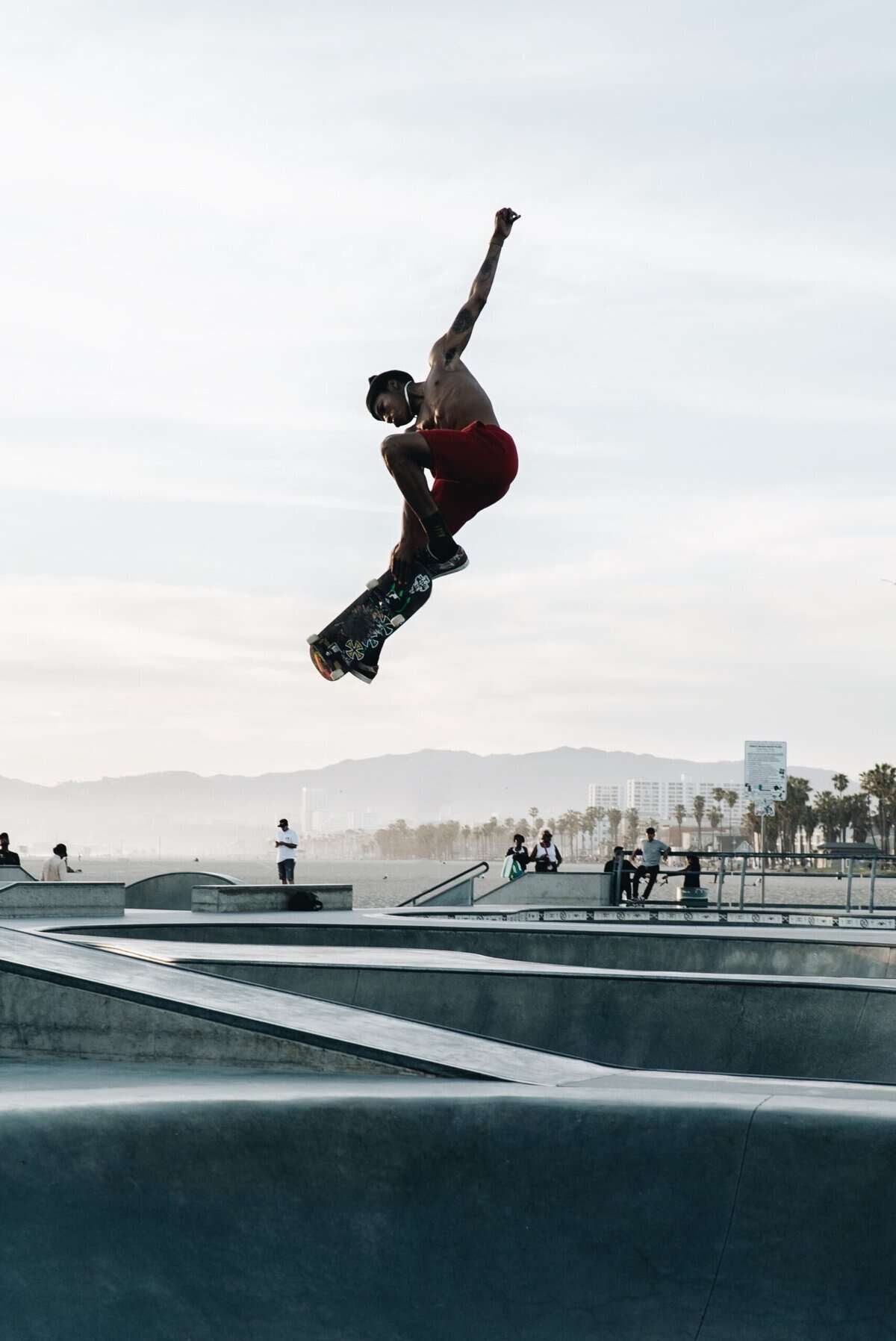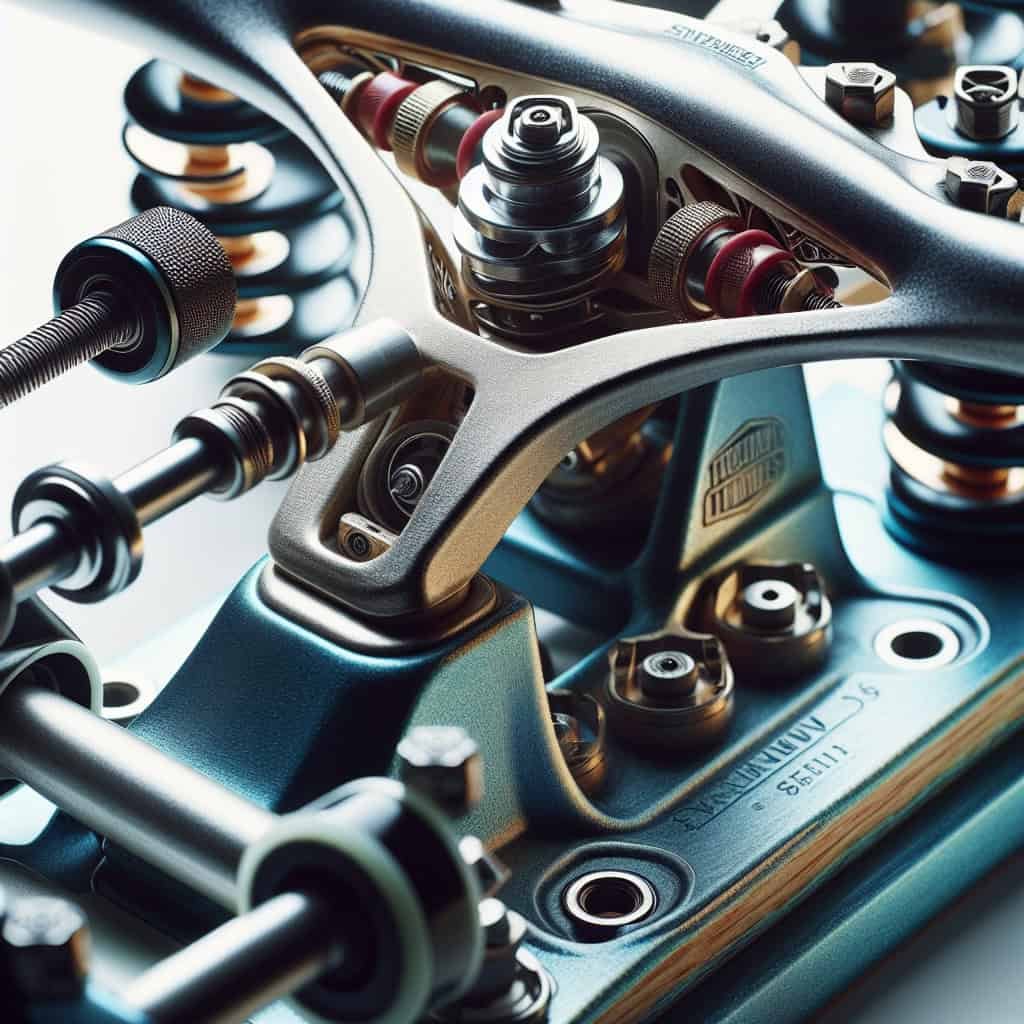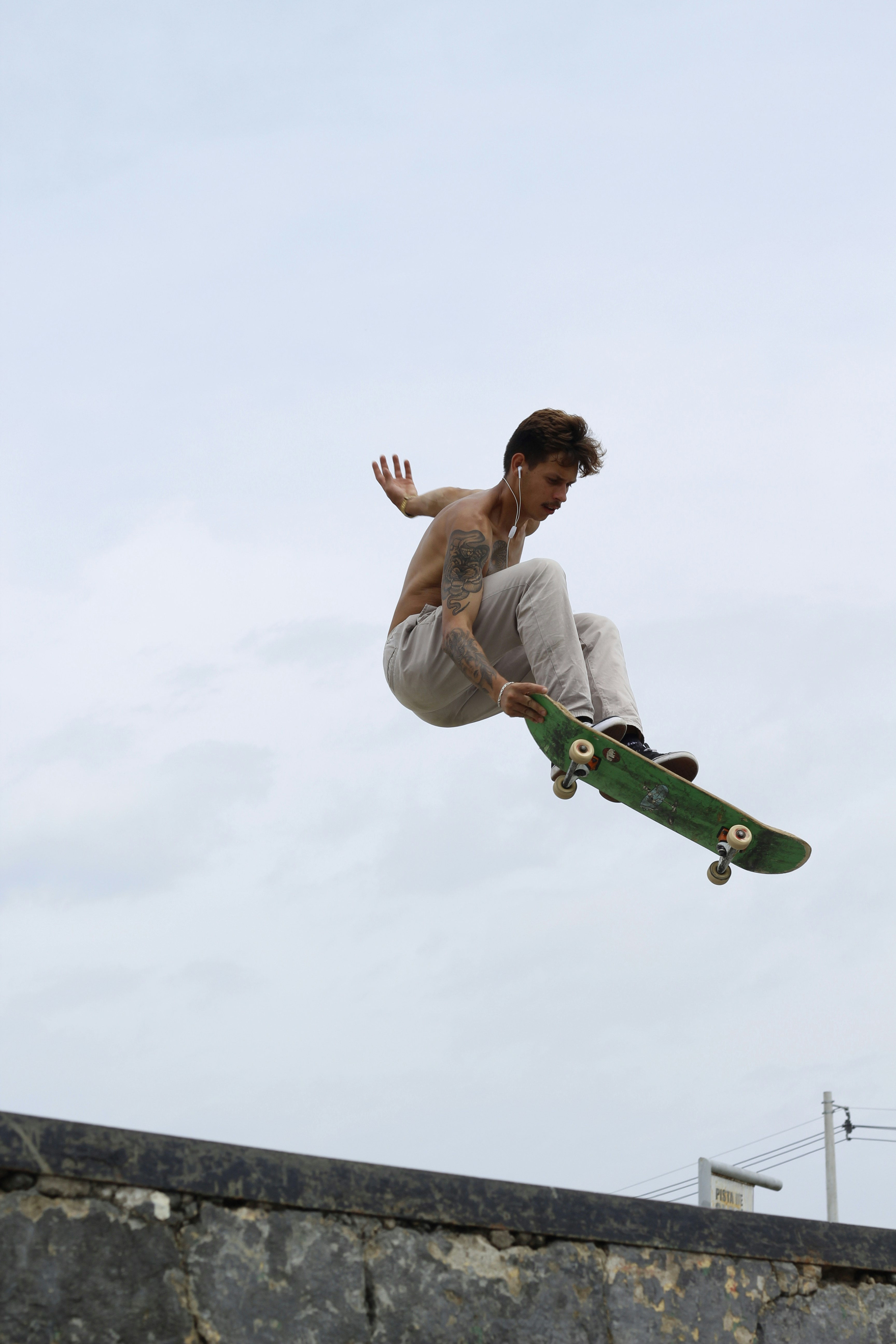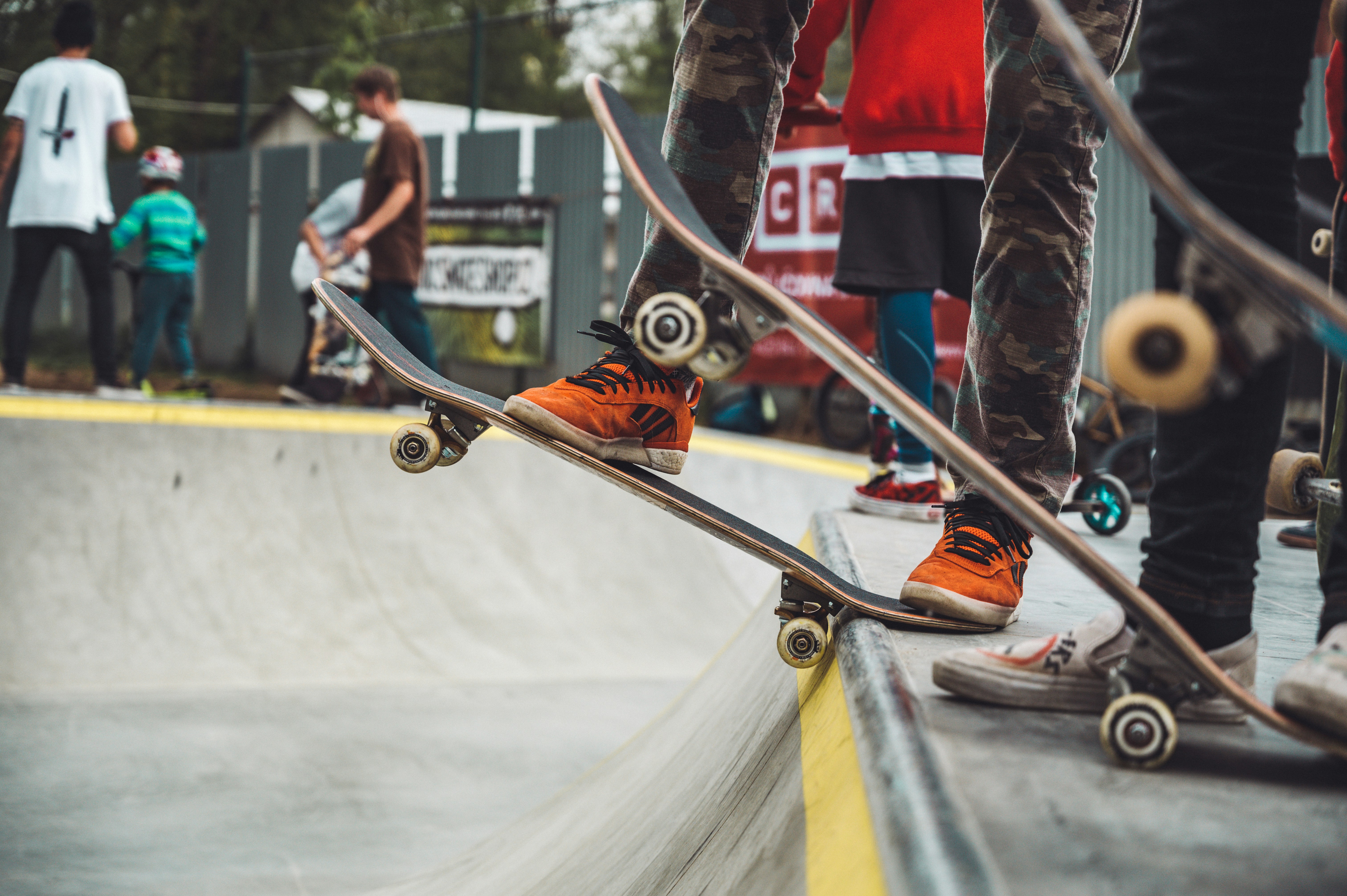Skateboarding is not just a sport, it’s an expression of individual style and creativity. And if you’re truly dedicated to perfecting your ride, you know that every little adjustment matters. One crucial aspect that often goes unnoticed is adjusting your skateboard trucks to match your unique riding style. But fear not, for in this article, we will guide you through the intricate nuances of tweaking your skateboard trucks, unlocking the potential for a ride that feels tailor-made just for you. Get ready to take your skills to the next level as we delve into the art of truck adjustments. So, grab your board, and let’s hit the pavement together!
Choosing the Right Skateboard Trucks
Skateboard trucks are a crucial component of your skateboard setup, as they determine how your board performs and handles on different terrains. When it comes to choosing the right skateboard trucks, it’s essential to understand the different truck parts and consider the specific demands of your riding style. Whether you’re into street skating, vert skating, freestyle skating, or longboarding, selecting the appropriate trucks can significantly enhance your overall skateboarding experience.
Understanding the Different Truck Parts
Before diving into the specific considerations for each riding style, it’s important to familiarize yourself with the various truck parts. Skateboard trucks consist of several components, including the baseplate, hanger, kingpin, bushings, axle, and pivot cup. Each of these parts plays a crucial role in the overall performance and maneuverability of your skateboard.
The baseplate is the flat metal piece that attaches the trucks to the skateboard deck. It provides stability and acts as a foundation for the other truck parts. The hanger is the T-shaped metal piece that holds the axle and wheels in place. It determines the width of your trucks and affects your ability to execute certain tricks.
The kingpin is the large bolt that holds everything together. Adjusting the tightness of the kingpin affects the trucks’ responsiveness and turning ability. Bushings are rubber or urethane cushions that sit between the baseplate and the hanger. They provide cushioning and control the trucks’ turning radius. Depending on your riding style, selecting the right bushings is crucial to achieving the desired level of responsiveness and stability.
Considerations for Street Skating
If street skating is your preferred riding style, you’ll want to choose skateboard trucks that offer optimal control and maneuverability on urban terrain. Street skateboarding often involves executing technical tricks and navigating through tight spaces. Therefore, the following considerations are essential for street skaters:
Looseness vs Tightness: Finding the right balance between loose and tight trucks is crucial for street skating. Loose trucks allow for sharper turns and quick maneuverability, making them ideal for executing tricks like kickflips and ollies. On the other hand, tighter trucks offer more stability and control, making them suitable for high-speed skating and grinding rails or ledges.
Finding the Ideal Kingpin Tightness: Experimenting with different kingpin tightness levels is key to finding the ideal setup for street skating. Loose kingpins result in more responsive trucks but may sacrifice stability at higher speeds. Tighter kingpins offer better stability but can limit maneuverability and hinder certain tricks.
Choosing the Right Bushings: The choice of bushings is crucial for achieving the desired level of control and responsiveness for street skating. Softer bushings allow for greater turning ability and sharp carves, making them suitable for technical tricks. On the other hand, harder bushings provide more stability and are better suited for high-speed skating.
Impact of Truck Width on Street Skating: The width of your trucks affects your overall stability and maneuverability, particularly when performing tricks on narrow ledges or stairs. Narrower trucks offer more agility and are easier to flip, while wider trucks provide better stability but may be less responsive for certain tricks.
Considerations for Vert Skating
Vert skating, also known as ramp skating, involves riding on vertical surfaces such as halfpipes, bowls, and vert ramps. It requires a different setup compared to street skating, as the focus is on gaining height and executing aerial tricks. When choosing skateboard trucks for vert skating, consider the following factors:
Finding the Optimal Looseness: Vert skaters often prefer tighter trucks to ensure stability and control when landing high-impact tricks and aerial maneuvers. However, some skaters still prefer a looser setup to allow for more aggressive carving and smoother transitions between tricks.
Selecting the Appropriate Bushings: Bushings with medium hardness are typically preferred for vert skating, as they offer a balance between stability and responsiveness. This allows for solid landings and smooth transitions while still providing enough maneuverability on ramps.
Impact of Truck Height on Vert Skating: The height of your trucks plays a significant role in vert skating, as it can affect the board’s stability and maneuverability. Higher trucks provide more clearance when executing tricks, allowing for better grind control on coping and smoother transitions.
Considerations for Grind Tricks: For skaters who enjoy grind tricks on coping and rails, selecting trucks with appropriate grind clearance is crucial. Some trucks offer features such as extended kingpins or inverted kingpins, which provide more space for locking into grinds and slides.
Considerations for Freestyle Skating
Freestyle skateboarding is all about creativity and executing technical tricks on flat ground or at skate parks. It requires a versatile setup that can handle a wide range of maneuvers and tricks. When choosing skateboard trucks for freestyle skating, consider the following factors:
Striking the Right Balance: Freestyle skaters often prefer a setup that strikes a balance between stability and maneuverability. This allows for executing technical tricks with precision while still providing enough stability for landing and transitioning between maneuvers.
Choosing the Right Bushings: The choice of bushings depends on individual preference, with some skaters opting for softer bushings for enhanced maneuverability, while others prefer harder bushings for stability. Experimenting with different bushing hardness levels can help you find the right setup for your freestyle skating style.
Impact of Truck Width on Freestyle Skating: Similar to street skating, the width of your trucks can affect your maneuverability and stability for freestyle skateboarding. Narrower trucks offer better board control and are easier to flip, making them suitable for technical tricks. Wider trucks provide more stability but may sacrifice some maneuverability.
Considerations for Flip Tricks: Freestyle skaters who enjoy executing flip tricks should pay attention to the trucks’ responsiveness and maneuverability. Trucks with tighter kingpins and softer bushings can provide the necessary control and responsiveness for executing flip tricks with precision.
Considerations for Longboarding
Longboarding is all about cruising, carving, and enjoying the smooth ride. Whether you’re into cruising around town, downhill riding, or sliding, choosing the right skateboard trucks is crucial for achieving the desired level of performance and stability. Consider the following factors when selecting trucks for longboarding:
Looseness vs Stability: Finding the right balance between loose and stable trucks is crucial for longboarding. Looser trucks offer better maneuverability and are ideal for cruising and carving. Tighter trucks provide more stability at higher speeds and are preferable for downhill riding.
Choosing the Right Bushings: Longboarders typically opt for softer bushings that offer greater turning ability and better carving control. Softer bushings allow for smooth and responsive turns, enhancing the overall longboarding experience.
Impact of Truck Width on Longboarding: The width of your trucks affects your stability and maneuverability while longboarding. Wider trucks provide more stability but may sacrifice some maneuverability, making them suitable for downhill riding. Narrower trucks offer increased agility and are preferable for technical sliding maneuvers.
Considerations for Downhill Riding: For longboarders who enjoy the thrill of downhill riding, selecting trucks with greater stability and control is vital. Downhill trucks often feature wider hangers and longer wheelbases, providing enhanced stability at higher speeds.
Fine-Tuning Your Truck Adjustments
Now that you have a better understanding of the specific considerations for different riding styles, it’s time to fine-tune your truck adjustments. Adjusting skateboard trucks is not a one-size-fits-all process; it requires experimenting and finding the setup that best suits your individual preferences and riding style.
Experimenting with Different Adjustments
Finding the perfect truck adjustments often involves experimentation. Start by gradually adjusting the tightness of your kingpin to determine the sweet spot that offers the ideal level of responsiveness and stability for your riding style. Additionally, you can try different bushing hardness levels and truck widths to fine-tune your setup.
Considering Your Weight and Height
Your weight and height also play a role in determining the optimal truck adjustments. Heavier riders may require tighter trucks for added stability, while lighter riders may prefer looser trucks for enhanced maneuverability. Similarly, taller riders may benefit from wider trucks to accommodate their stance and riding style.
Analyzing Your Riding Style
Take some time to analyze your riding style and the specific tricks or maneuvers you commonly perform. Pay attention to how your trucks feel during different skateboarding activities and adjust accordingly. Fine-tuning your trucks can help optimize your performance and make your skateboarding experience more enjoyable.
Seeking the Advice of Experienced Riders
If you’re unsure about the ideal truck adjustments for your riding style, don’t hesitate to seek advice from experienced riders or professionals at your local skateboard shop. They can offer valuable insights and recommendations based on their expertise and personal experiences.
Tools and Techniques for Adjusting Trucks
To make precise truck adjustments, you’ll need the right tools and techniques. Here are some essential tools and a step-by-step guide on adjusting skateboard trucks:
The Right Tools for the Job
- Socket wrench or skate tool: A socket wrench or a dedicated skate tool is necessary for adjusting the kingpin nut and mounting hardware.
- Screwdriver: A Phillips screwdriver is required for adjusting the kingpin and pivot cup screws, if applicable.
Step-by-Step Guide to Adjusting Skateboard Trucks
Start by placing your skateboard upside down on a flat surface, ensuring it is stable and secure.
Use a socket wrench or skate tool to loosen the kingpin nut on each truck. Loosening the nut will allow you to adjust the tightness or looseness of the trucks.
Experiment with different tightness levels by tightening or loosening the kingpin nut. Pay attention to how the trucks feel when turning and adjust accordingly.
If your trucks have adjustable pivot cups, use a screwdriver to adjust the screws. Tightening or loosening the screws can affect the trucks’ responsiveness and stability.
Swap out bushings of different hardness levels to fine-tune your trucks’ responsiveness. Use the skate tool or socket wrench to remove the kingpin nut, replace the bushings, and tighten the nut back in place.
If necessary, adjust the mounting hardware to change the truck’s width. Get the appropriate skate tool for your hardware and loosen or tighten the bolts as needed.
Test out your adjusted trucks and make further tweaks if necessary. Take your board out for a ride and pay attention to how it handles. If your trucks still feel too loose, too tight, or unstable, continue making adjustments until you find the perfect setup.
Common Troubleshooting Issues
While adjusting your skateboard trucks, you may encounter some common troubleshooting issues. Here are a few issues and their potential solutions:
Trucks Feeling Too Loose
If your trucks feel overly loose, resulting in instability and poor control, consider these solutions:
- Tighten the kingpin nut gradually to increase the truck’s stability without sacrificing maneuverability.
- Replace your bushings with harder ones to achieve greater stability and control.
- Consider upgrading to trucks with a higher kingpin or pivot cup, as these can provide additional stability.
Trucks Feeling Too Tight
When your trucks feel excessively tight, impeding your ability to turn or execute tricks properly, try these solutions:
- Loosen the kingpin nut to allow for sharper and easier turns.
- Switch to softer bushings to improve turning ability and responsiveness.
- Consider trucks with a lower kingpin or pivot cup to achieve a looser setup.
Inconsistent Turning Performance
If your skateboard’s turning performance feels inconsistent or unpredictable, consider the following solutions:
- Check for any loose or damaged components and tighten or replace them as needed.
- Experiment with different bushing hardness levels to find the right balance between stability and responsiveness.
- Verify that your trucks are properly aligned and adjust the mounting hardware if necessary.
Issues with Wheelbite
Wheelbite occurs when your wheels come into contact with the skateboard deck, causing your board to abruptly stop or throw you off balance. To address wheelbite, consider the following solutions:
- Install riser pads between your trucks and the skateboard deck to increase the distance and prevent wheelbite.
- Check the tightness of your trucks and adjust accordingly. Looser trucks can reduce the risk of wheelbite.
- Consider using smaller wheels or adding wheel wells to your deck to provide more clearance.

Regular Maintenance for Optimal Performance
To ensure your skateboard trucks perform optimally and have a longer lifespan, regular maintenance is essential. Here are some maintenance practices you should incorporate into your skateboarding routine:
Cleaning and Lubricating Trucks
Properly cleaning and lubricating your trucks helps maintain smooth and consistent performance. Regularly remove dirt, debris, and grime from your trucks with a soft cloth or brush. Apply a suitable skateboard lubricant to the pivot cup, kingpin, and hanger to reduce friction and promote smooth turning.
Inspecting and Replacing Parts
Regularly inspect your skateboard trucks for any signs of wear and tear, such as cracked or worn bushings, loose screws, or damaged pivot cups. Replace any worn or damaged parts promptly to prevent further issues and ensure your trucks perform optimally.
Ensuring Proper Alignment
Check the alignment of your skateboard trucks to ensure they are parallel and properly centered. Misaligned trucks can negatively impact your board’s stability and maneuverability. Make necessary adjustments to the mounting hardware to achieve optimal alignment.
Conclusion
Choosing the right skateboard trucks and making precise adjustments is crucial for optimizing your riding experience and performance. Understanding the nuances of adjusting skateboard trucks for different riding styles, such as street skating, vert skating, freestyle skating, and longboarding, allows you to fine-tune your setup to meet your specific needs. By considering factors such as looseness, tightness, bushing selection, and truck width, you can enhance your maneuverability, stability, and control. Regular maintenance and troubleshooting further ensure that your skateboard trucks deliver optimal performance and longevity. So go ahead, explore the different adjustments, experiment with your setup, and enjoy the ride!



